This post may contain affiliate links. Please read our disclosure policy.
This easy Butternut Squash Mac and Cheese is both indulgent and nutritious! It’s creamy, comforting, and PACKED with butternut squash – the perfect, ultra-satisfying weeknight dinner or fall side dish.
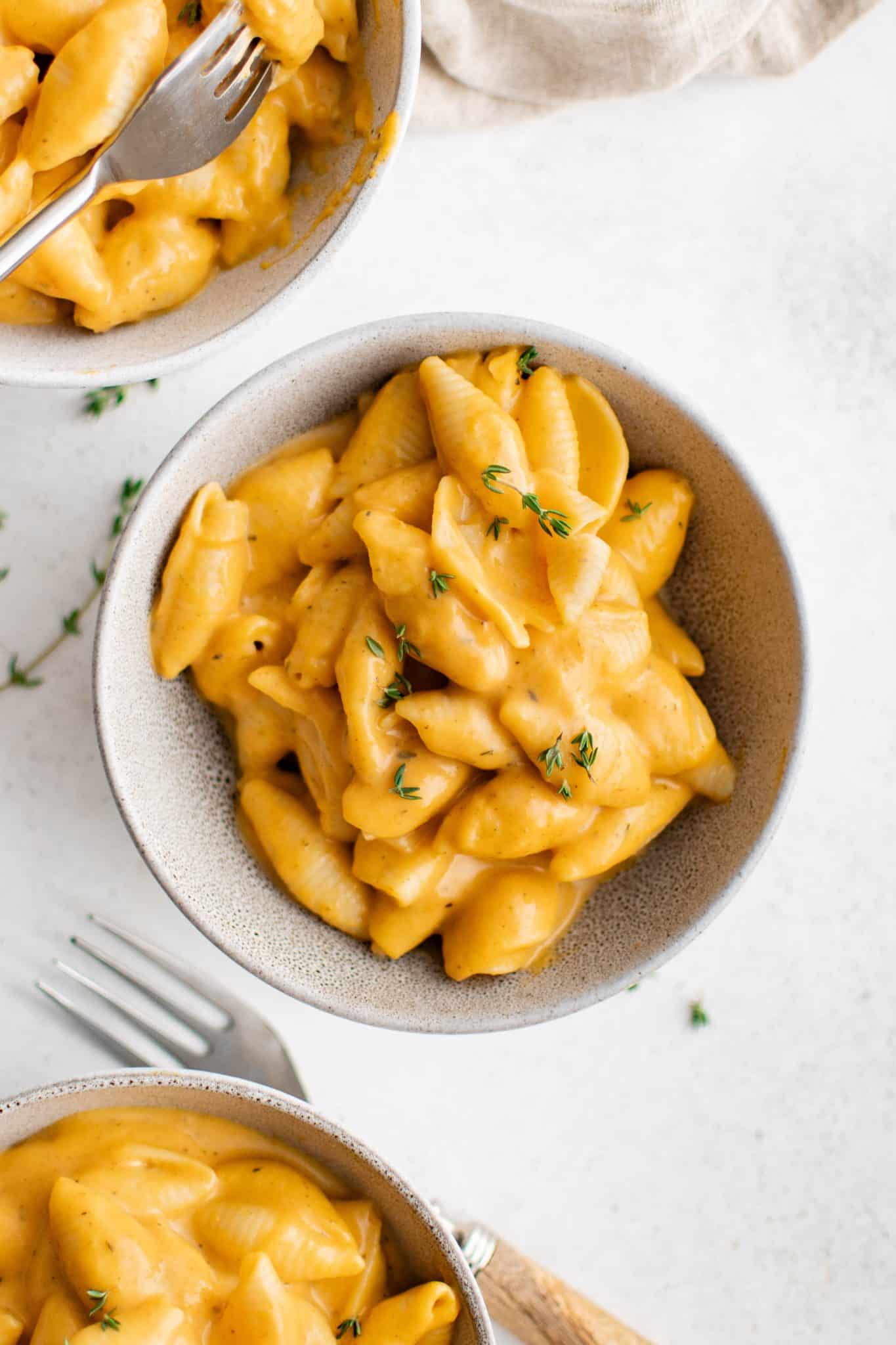
Butternut Squash Pasta Sauce
Looking for a creamy, veggie-packed twist on classic mac and cheese? This easy Butternut Squash Mac and Cheese is made with six cups of butternut squash blended into a smooth, cheesy butternut squash pasta sauce that’s rich, comforting, and 100% kid-approved. Ready in about an hour and made with everyday ingredients like pasta, cheddar cheese, and simple spices, it’s the perfect fall dinner recipe or Thanksgiving side dish when served alongside homemade cranberry sauce and soft dinner rolls.
Plus, it’s super easy to make. Simply sauté the squash, blend until smooth, stir into a béchamel sauce, then mix with pasta and cheese. It’s a lighter take on classic baked mac and cheese without sacrificing flavor or creaminess.
Why you’ll love this recipe:
- Made with 6 cups of fresh butternut squash
- Creamy, cheesy, and secretly full of vegetables
- Easy to make ahead or freeze
- No oven baking required, just the stovetop!
Table of Contents
Key Ingredients
You can find the complete list of ingredients and full recipe in the recipe card below. Here’s what you should know about the key ingredients in this butternut squash mac and cheese before you head to the store.
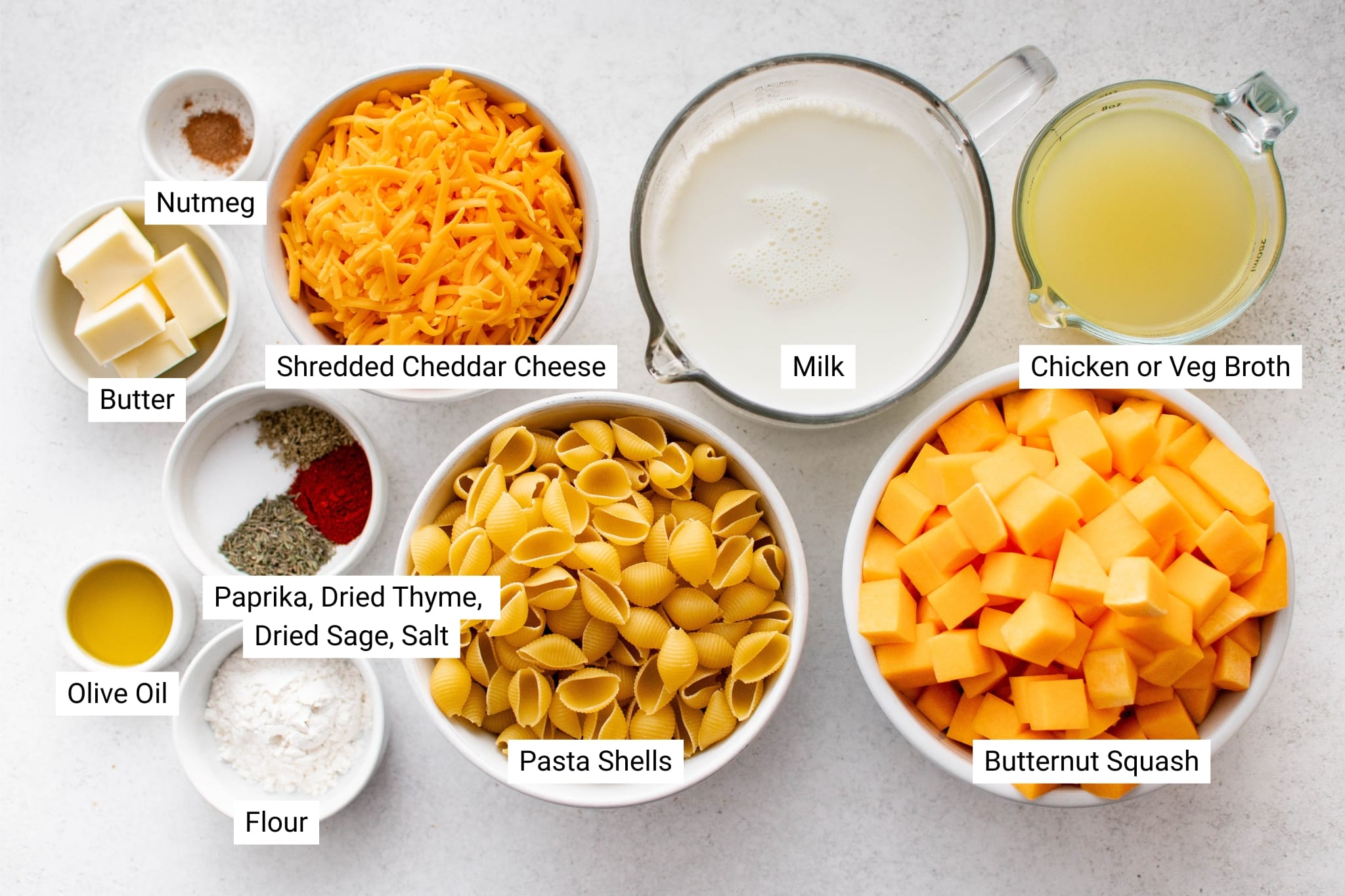
Butternut Squash: This Butternut Squash Mac and Cheese gets its rich, velvety texture from 6 cups of cubed butternut squash. To get that amount, you’ll need either one large squash (about 3 to 4 pounds) or two small to medium squash (around 1.5 pounds each). Once cooked and blended, the 6 cups of squash yield approximately 2½ to 3 cups of butternut squash purée.
- Want to use canned squash instead? Substitute with 1½ to 2 cans (15 ounces each) of unsweetened butternut squash purée or pumpkin puree (not pie filling). Since canned squash is often thinner than freshly blended squash, you may want to reduce the milk slightly or simmer the sauce a few extra minutes to thicken.
Short-Cut Pasta: Short-cut pasta is basically any type of pasta that is less than 2-inches and is stabbed, rather than twirled, with a fork. I used medium-sized pasta shells to make this recipe, but other options include macaroni noodles, fusilli, pipe rigate, penne, etc.
Béchamel Sauce: Don’t let this fancy French word scare you, béchamel sauce basically consists of whole milk that’s thickened with a roux made from melted butter and flour, with a hint of salt, black pepper, and nutmeg for flavor. It’s very easy to make, and serves as the base for countless white sauces like cheese sauce and Alfredo sauce.
Cheese: I chose to keep this recipe simple and add just shredded cheddar cheese. For a more ‘upscale’ vibe, try adding freshly shredded gouda, Gruyère, or fontina. A dusting of grated Parmesan will add delicious nutty and umami depth. For best results, grate your own cheese rather than buying bags of pre-shredded cheese. Pre-shredded cheese is coated in anti-caking agents that can cause the cheese to clump together when it melts.
Step-by-Step Instructions
Here’s a visual overview of how to make this butternut squash mac and cheese recipe. For detailed instructions and the full printable recipe, check out the recipe card below.

- Melt one tablespoon of butter and olive oil in a large Dutch oven.

- Add the chopped butternut squash and cook until softened.

- Add the broth, salt, paprika, thyme, and sage.

- Cover and simmer for 15 minutes.

- Boil the pasta according to package instructions; drain and set aside.

- Transfer the squash to a blender, blend until smooth, and set aside.

- Return the same pot to medium heat. Melt the butter.

- Once the butter is melted, whisk in the flour, salt, and nutmeg.

- Whisk continuously until a slightly thickened; about 1-2 minutes.

- Slowly add the milk, whisking continuously to prevent clumping.

- Stir in the pureed butternut squash mixture.

- Followed by the cooked pasta.

- Remove from heat and fold in the freshly shredded cheddar cheese.

- Season with salt and black pepper to taste.
Optional Additions
This butternut squash pasta is super versatile. Stir in some crumbly oven-baked bacon or air-fryer bacon, baby spinach, roasted garlic, or caramelized onion for extra flavor. Add some tender cooked shrimp or juicy baked chicken breast for protein.
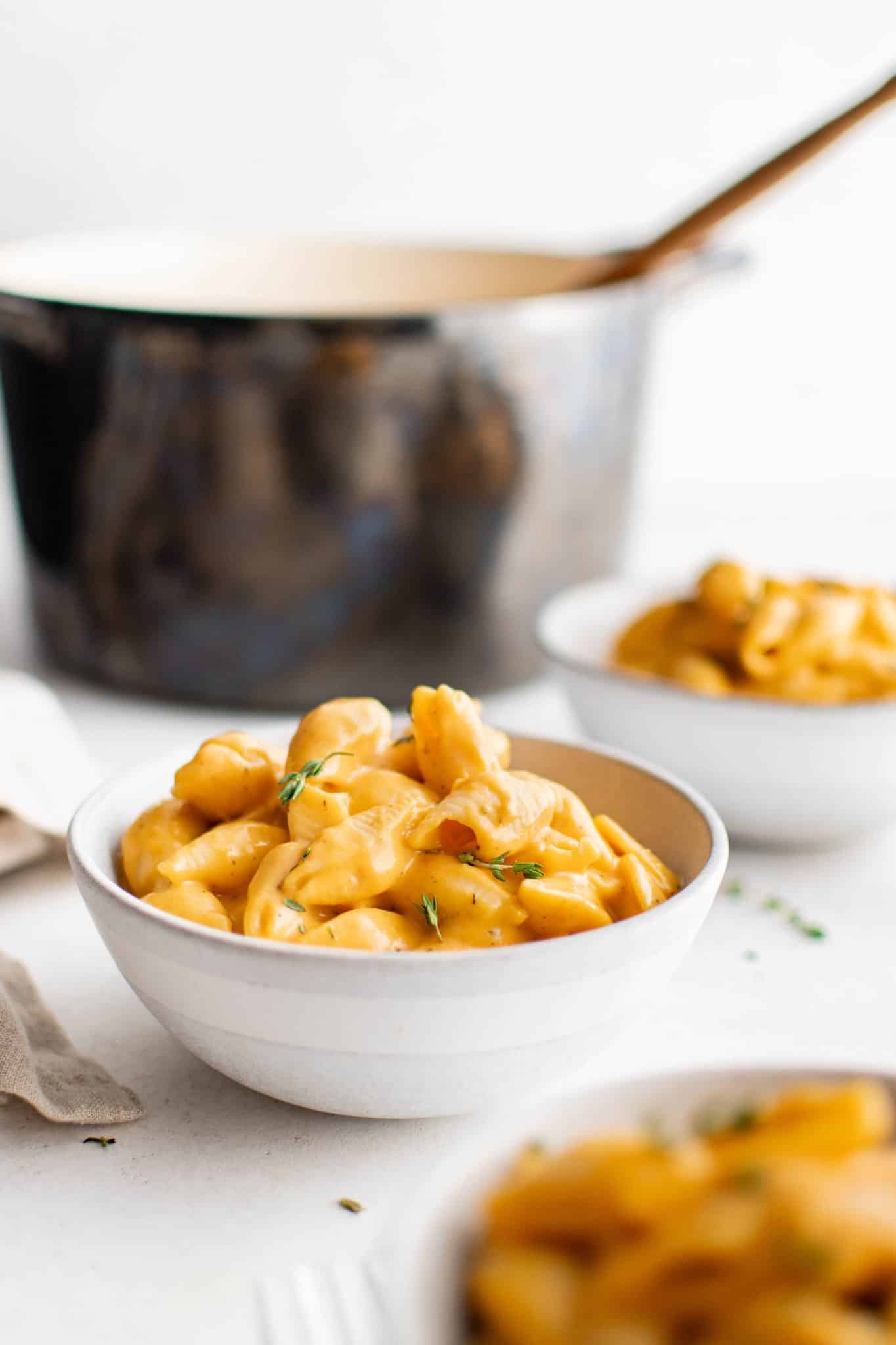
Jessica’s Pro Tips
How to Make the Ultimate Butternut Squash Mac and Cheese
- Pick the perfect butternut squash. A ripe butternut squash has sweeter flavor. How can you tell when your squash is ripe? Pick it up; it should feel heavy for its size and sound hallow when tapped with your fingers.
- The roux is key. The butter and flour roux creates a stable base for the milk and squash purée, which helps prevent the sauce from separating.
- Bring the milk to room temperature. Cold mild can cause the butter and flour mixture to seize or thicken unevenly, resulting in a lumpy sauce. Using room temperature or slightly warmed milk helps the béchamel form smoothly.
- Roast the squash for more flavor. Roasting caramelizes the natural sugars, adding depth and sweetness to the final sauce. This method takes a bit more time, but roasted butternut squash can be made ahead and stored in the refrigerator for 2-3 days until ready to use. You can roast butternut squash in the oven, cook butternut squash in the air fryer, or even cook Instant Pot butternut squash.
- Use a different type of squash. Butternut squash is my favorite type of winter squash, but this pasta sauce is just as delicious with roasted acorn squash, kabocha squash, baked pumpkin, or roasted delicata squash.
- What about a baked version? Baked mac and cheese is perfect for parties and potlucks. To transform this stovetop butternut squash mac and cheese into a baked casserole dish, simply transfer the prepared mac and cheese to a large greased baking dish. Sprinkle with additional shredded cheese and/or breadcrumbs, then bake at 375°F for 15–20 minutes, or until bubbly and golden on top.
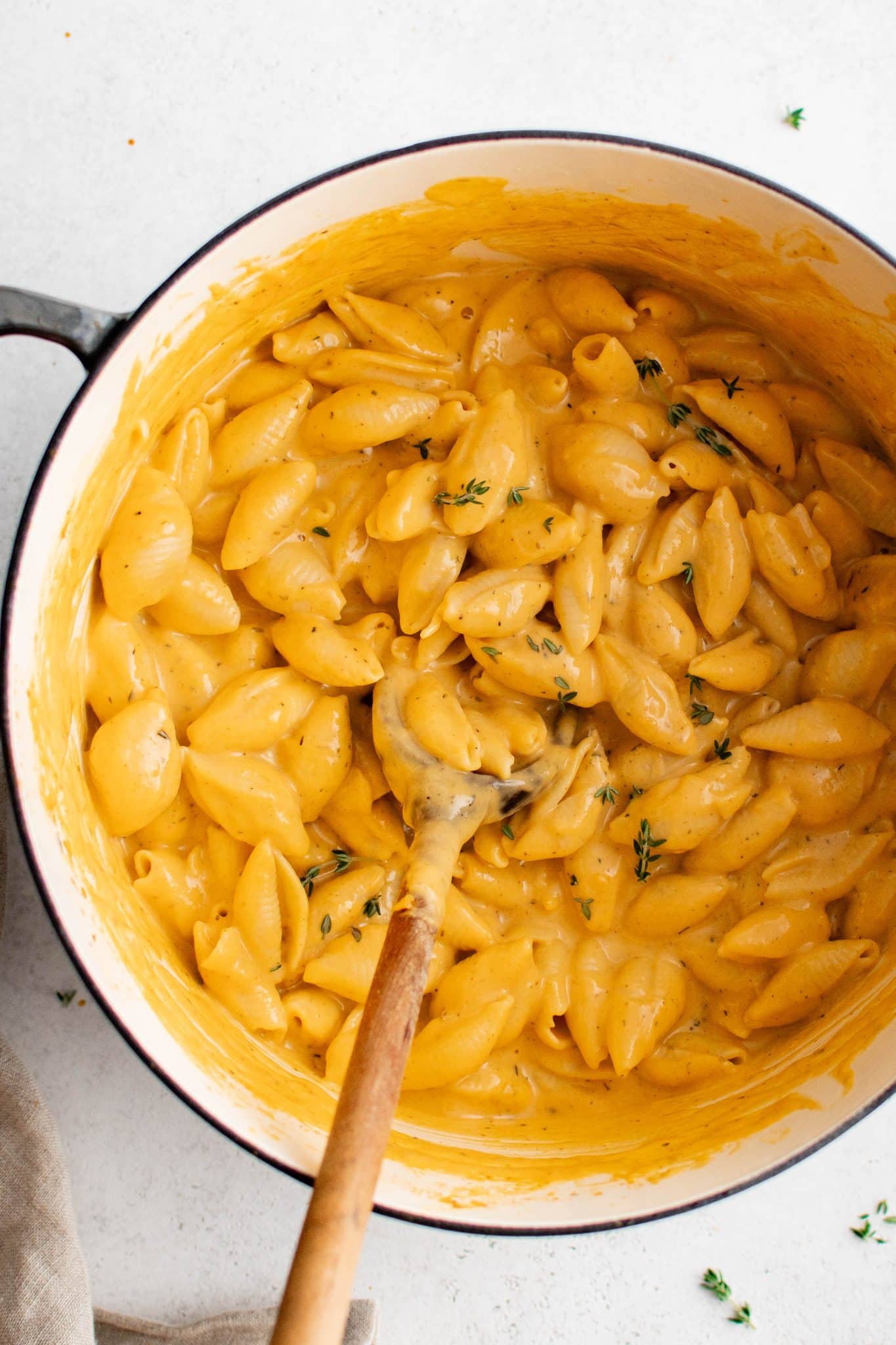
Serving Suggestions
This butternut squash mac and cheese is a delicious and comforting fall lunch, dinner, or Thanksgiving side dish! It’s a guaranteed hit with both kids and adults and pairs perfectly with simple veggies like sautéed zucchini, roasted asparagus, or Air Fryer Brussels sprouts. You can also pair it with a fresh salad like:
Looking for something low-carb? Ditch the pasta altogether and pour this creamy butternut squash pasta sauce over roasted cauliflower steaks, broccoli, or roasted spaghetti squash.
Storage, Freezing and Reheating
Make-Ahead: You can prepare the entire dish up to 2 days in advance. After cooking, let the mac and cheese cool completely, then store in an airtight container in the refrigerator. Reheat gently with a splash of milk to restore creaminess.
- For best results, prep just the butternut squash cheese sauce ahead of time! Store it in the fridge for up to 3 days and stir into freshly cooked pasta when ready to serve.
Storage: Leftovers will keep in an airtight container in the refrigerator for up to 4 days. Let the dish cool to room temperature before sealing and storing.
My Thoughts on Freezing: Yes, you can freeze this butternut squash mac and cheese recipe, BUT, for best results, freeze just the sauce (without the pasta) in a freezer-safe container for up to 2 months. Cooked pasta does not (typically) freeze and reheat well. The texture will change, which may be unpleasant to some diners.
Reheating: To reheat on the stovetop, add a splash of warm milk over low heat, stirring gently until hot. To reheat in the microwave, transfer to a microwave-safe dish, cover loosely, and heat in 30-second intervals, stirring between rounds. Add a bit of milk or broth if needed to loosen the sauce.
More Butternut Squash Recipes
Have you tried butternut squash mac and cheese recipe? Tell me about it in the comments below! I always love to hear your thoughts. And tag #theforkedspoon on Instagram if you’ve made any of my recipes, I always love to see what you’re cooking in the kitchen.

Butternut Squash Mac and Cheese Recipe
Ingredients
- 5 tablespoon butter, divided
- 1 tablespoon olive oil
- 6 cups butternut squash, peeled, seeded and cubed into 1-inch pieces
- 1 cup low-sodium vegetable, or chicken broth
- 1½ teaspoon salt, divided, plus more to taste
- 1 teaspoon smoked paprika
- 1 teaspoon dried thyme
- ½ teaspoon dried sage
- 1 pound medium shell pasta, or macaroni noodles
- 2 tablespoon all-purpose flour
- ⅛ teaspoon ground nutmeg
- 3 cups whole milk milk, at room temperature
- 2 cups cheddar cheese, freshly shredded
- fresh thyme, to garnish
Instructions
- Sauté the butternut squash: In a large pot or Dutch oven, heat 1 tablespoon of butter and 1 tablespoon of olive oil over medium heat. Add the cubed butternut squash and cook, stirring occasionally, for about 10–12 minutes, or until the squash begins to soften and develop light golden edges. This step builds flavor into the final sauce, so don’t rush it.
- Simmer with broth and spices: Add the vegetable broth, 1 teaspoon salt, smoked paprika, dried thyme, and dried sage. Stir well, cover the pot with a lid, and reduce the heat to medium-low. Let the squash simmer for 15 minutes, or until completely fork-tender and fragrant.
- Cook the pasta: While the squash simmers, bring a large pot of salted water to a boil. Cook the shells or macaroni noodles according to package instructions until al dente. Drain and set aside.
- Blend the squash: Once the squash is fully cooked, carefully transfer it (along with any remaining liquid) to a high-powered blender or food processor. Blend until completely smooth and creamy, then set aside. If your mixture is too thick to blend, add a splash of warm broth or milk to help it along.
- Make the roux: In the same pot (no need to clean it!), melt the remaining 4 tablespoons of butter over medium heat. Sprinkle in the flour, ½ teaspoon salt, and nutmeg, and stir continuously for 1 minute to form a roux. It should be bubbly and lightly golden, not brown. This will help thicken the cheese sauce.
- Add the milk and squash purée: Slowly whisk in the room-temperature milk, stirring constantly to avoid lumps. Turn the heat up to medium and pour in the blended squash. Continue stirring until the mixture is smooth, creamy, and heated through, about 3–5 minutes.
- Combine with pasta: Add the cooked pasta to the sauce and stir gently until all the noodles are evenly coated in the creamy squash mixture.
- Melt in the cheese: Turn off the heat and fold in the shredded cheddar cheese, a handful at a time, stirring until fully melted and velvety. Taste and adjust with additional salt, if needed.
- Garnish and serve: Spoon into bowls and top with fresh thyme leaves or a sprinkle of black pepper, if desired. Serve warm and enjoy!
Notes
- Butter: Replace it with plant-based butter.
- Milk: Use unsweetened, unflavored non-dairy milk like oat, almond, soy, or cashew. In my experience, oat milk gives the creamiest texture.
- Cheese: Use a good-quality vegan shredded cheddar-style cheese that melts well, such as Violife, Daiya, or Follow Your Heart.
- Pasta: Swap in your favorite gluten-free pasta. Look for chickpea, brown rice, or quinoa-based noodles for best texture. Tip: Gluten-free pasta tends to get super mushy when it’s overcooked; keep a close eye on the pasta as it cooks and drain it just as it reaches al dente.
- Flour: Replace all-purpose flour with a gluten-free all-purpose flour blend or 1:1 rice flour or oat flour for thickening the roux.
Nutrition
Nutrition information is automatically calculated, so should only be used as an approximation.



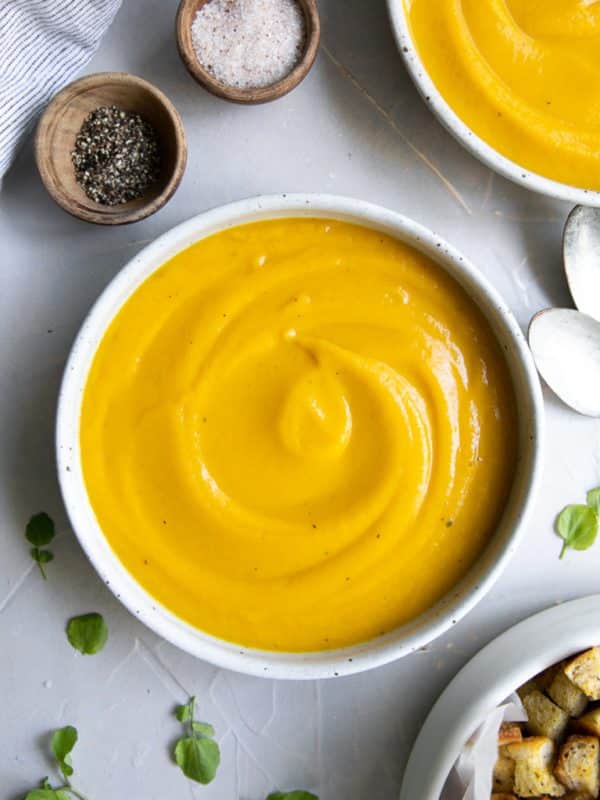
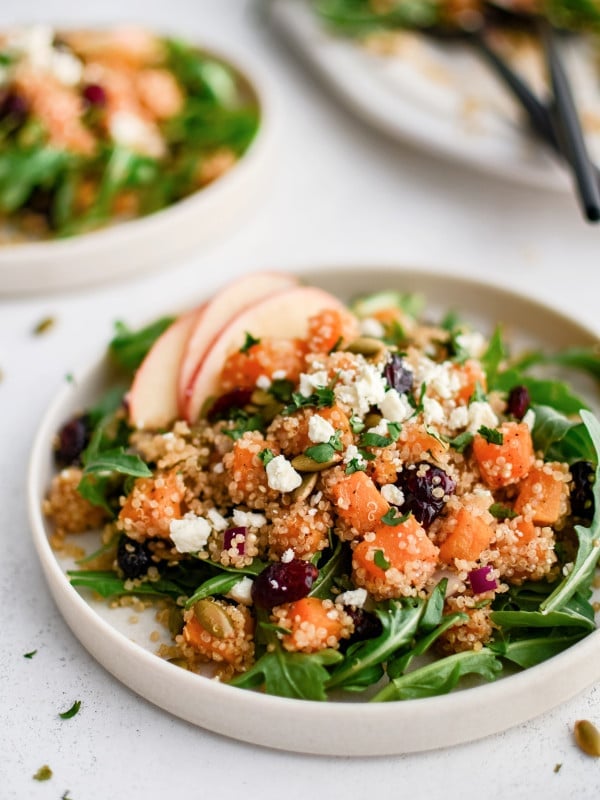


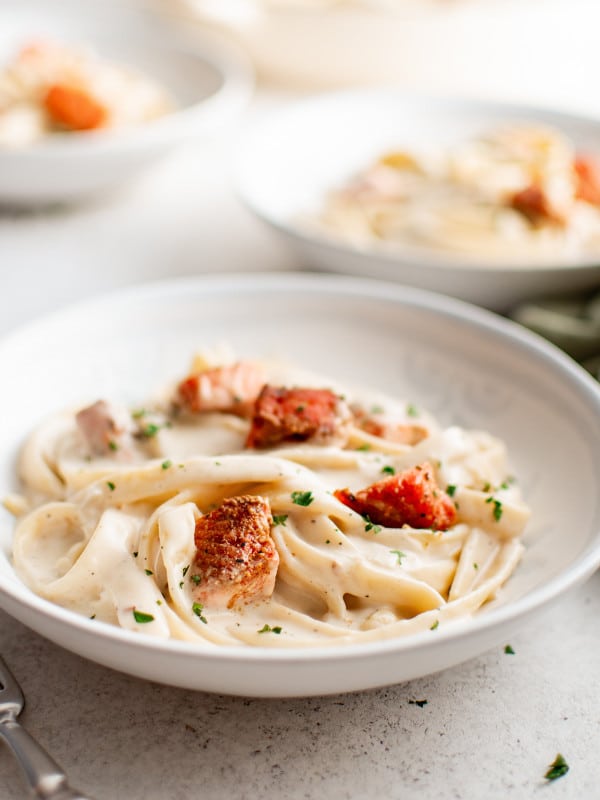











Step 3 should read “blend the milk and squash”, not milk and cheese, I am assuming..?
Thanks for catching that Joanne, I updated the instructions to be a bit more clear 🙂
I made this with cauliflower, brocolli, onions and squash. A little curry powder and cumin and thyme made this heavenly. this is a keeper! thanks for posting this recipe. it will be a regular in this kitchen.
Thanks for the great feedback Allen 🙂